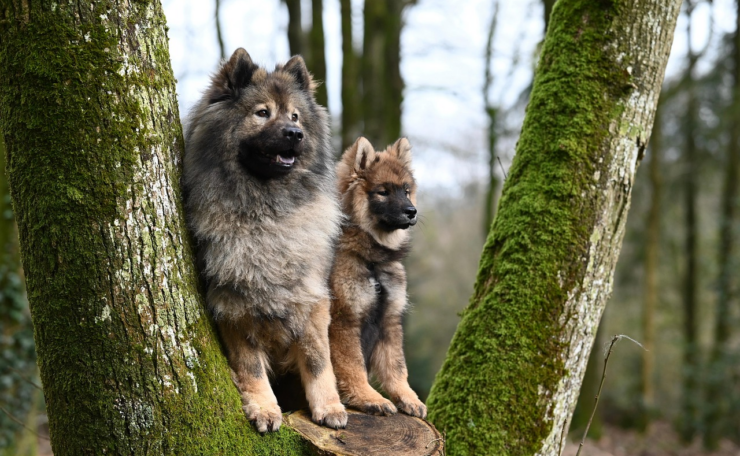Mastering Canine Obedience: 7 Keys to Successful Dog Training
Introduction
Training a dog is a significant undertaking that demands dedication, patience, and a clear understanding of animal behaviour. While many individuals consider training a means to teach dogs basic obedience commands, it is much more than that. It is an opportunity to bond and understand your pet, to mould your pet’s behaviour, and to make the environment safer and happier for both you and your canine companion. This comprehensive guide to dog training will equip you with the key principles and techniques you need to effectively and humanely train your dog.
Understanding Dog Behaviour
Before you can effectively train your dog, it is vital to understand dog behaviour. Dogs are social animals, pack creatures by nature. This means they are wired to look to a leader – in your case, that’s you, the owner. Creating a strong bond based on respect and trust is at the centre of effective dog training.
Dogs communicate primarily through body language and, to a lesser extent, through vocalisation. A wagging tail, a lowered head, a stiff stance – these are all messages that your dog is conveying. Recognising and correctly interpreting these signals can greatly assist in your training efforts.
Canines are also creatures of habit. They thrive on routine and are most comfortable when they know what to expect. A well-structured daily routine – including scheduled times for meals, walks, play, training, and rest – can greatly facilitate your dog’s learning progress.

Basic Training Commands
The basics of dog training are a set of commands that most responsible dog owners aim to teach their dogs. These include “sit,” “stay,” “come,” “down,” “heel,” and “leave it.” Teaching these commands to your dog forms the foundation of good behaviour, and it also ensures that you can control your dog in different situations.
Sit
This is usually the first command that dog owners teach their pets. To teach the “sit” command, hold a treat close to your dog’s nose and then move your hand up, which will naturally cause the dog to sit. Once your dog is in the sitting position, say the command “Sit,” give the treat and show affection.
Stay
The “stay” command is crucial for keeping your dog safe, especially in outdoor environments. Start by asking your dog to “sit.” Then, open the palm of your hand in front of you and say “Stay.” Take a few steps back and if your dog stays, reward with a treat.
Positive Reinforcement and Consistency in Training
Positive reinforcement is a method of dog training that rewards good behaviour rather than punishing bad behaviour. This method uses treats, praise, or play to reinforce the behaviour you want to see.
Consistency is the key to teaching your dog new behaviours. Once you decide on a command or rule, you must enforce it all the time so that your dog understands what you expect. This includes consistent commands, rewards, and people involved in training your dog – everyone in your household should use the same commands and follow the same rules.
Dealing with Unwanted Behaviour
Sometimes, despite your best efforts, your dog may exhibit unwanted behaviour such as excessive barking, chewing, or soiling. Always remember that punishment is not an effective solution. Instead, try to understand the root cause of the behaviour.
For instance, a dog might start chewing furniture because it’s teething, or due to boredom or anxiety. Similarly, a dog might soil indoors because it hasn’t been house trained properly, or because of a medical condition. The key is to address the cause, not the symptom.
Frequently Asked Questions
How Long Does Dog Training Usually Take?
There is no set timeline for dog training as it heavily depends on the breed, age, and individual temperament of your dog. However, consistency and patience are key. Regular, positive training sessions will yield results over time.
Can Old Dogs Be Trained?
Absolutely. The saying, “you can’t teach an old dog new tricks,” is simply not true. Older dogs can learn new skills, and they may be easier to train than puppies due to their longer attention span.
Are Certain Breeds Easier to Train than Others?
Different breeds have different characteristics. Some are bred to be leaders and are, therefore, more independent and harder to train. Others are bred to follow and may be easier to train. Regardless, every dog has the potential to be well-beaned, provided their training is tailored to their specific needs and temperament.
Conclusion
Training a dog can be challenging, but it doesn’t have to be a struggle. It can be a fun and rewarding experience that strengthens your bond with your pet. By understanding dog behaviour, using positive reinforcement, being consistent, and patiently dealing with unwanted behaviour, you’ll not only ensure the wellbeing of your pet but also create a peaceful and harmonious living environment. These principles and techniques of dog training will equip you with the knowledge and tools necessary to effectively train your dog, leading to a happier, safer environment for both you and your furry friend. Just remember, every dog is unique, every relationship is different. So, enjoy the journey and celebrate every single victory along the way.




